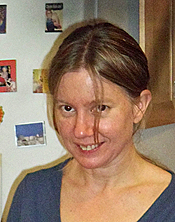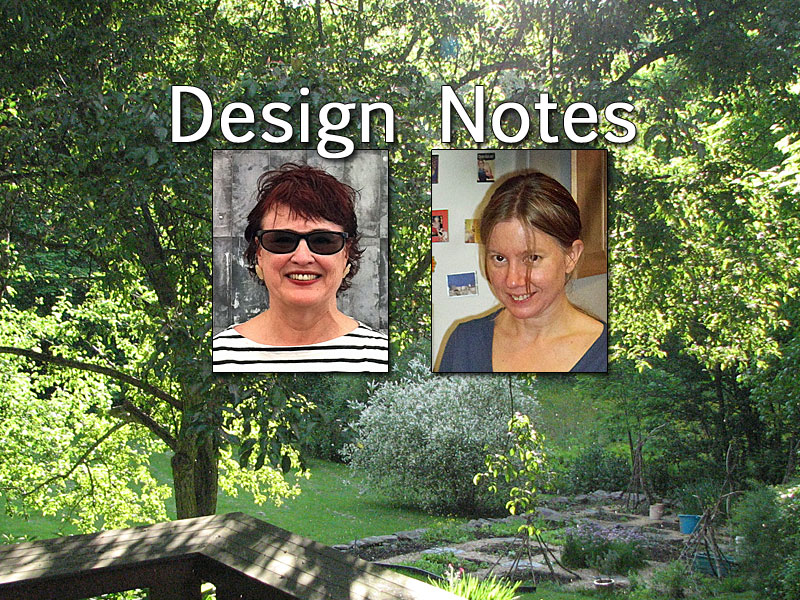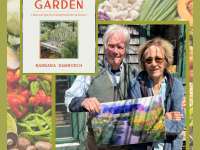Design Notes: An introduction
"We shape our buildings; thereafter they shape us" - Winston Churchill
Design Notes is a series of conversations about how our built environment affects us. We live in a designed world. So often our focus is upon the stuff of our everyday lives; the objects we use, the shape of the cell phone case, the color of the walls. We may be less aware of how circulation patterns or the amount and quality of light in a space may impact our sense of self, place and physical well being.
Steve Jobs is famous for insisting that design is about how things work rather than how they look, even though as a by product of organizing technology, he created some of the most notable design icons of the last decade. We want to create a dialogue about design in Midcoast Maine and how and why spaces and buildings work or don't work. We will look at the elements that contribute to the intangible feelings that we experience in spaces. Light, proportion, scale, materials, color, context, culture, history, budget, structure and codes all affect our everyday lives in ways that we often don't recognize consciously.
What are the physical characteristics of landscape that make the Midcoast such an appealing place to live and work? Images of the waterfront evoke an ever shifting experience of space that draws us back again and again to our ocean communities. While the breathtaking beauty of the area is often stereotyped in calendars of lighthouses and singing plastic lobsters, our memorable experiences of this place are more likely to be at the top of Beech Hill, watching a full moon rise over Penobscot Bay or engaging the rugged beauty of the Rockland breakwater, consciously stepping between the granite blocks protecting the working harbor.
What comprises the built environment? Does it include the windjammers and the lobster boats; the fishing wharves that were the first working structures along the coast of Maine in the 1700s? Our surroundings have always adapted to our seasonal way of life. The lush summer poetry of the harbors and lakes is very different from the frozen shrink-wrapped schooners and ice fishing shacks of January and February. We want to explore some of these moments of delight on our doorsteps.
On a domestic scale, how we live in our spaces can bring us together or separate us. Isolated kitchens make it difficult to help children with homework or socialize with friends while cooking. A welcoming front entrance lifts our spirits and can celebrate the whole notion of transition in a myriad of different ways. The front porch is the quintessential connection between private and public space.
Are our homes our castles? Do we have the right to do whatever we wish to our properties? What is the larger impact on the community when a historic structure is torn down? How many businesses can disappear before a place loses its sense of context and historical memory?
Our social patterns and our built environment have both changed significantly with the rapid development of technology. How do these changes affect our thinking going forward in making decisions that are best for our communities? Recent public discussions about the Camden public landing and river walk illustrate an appreciation of the necessity for well reasoned inclusive dialog about community design issues. We hope to provide a forum to discuss some of these issues and would welcome your thoughts.
-----------------------------------------------------------------

Chris Wohler came to Camden 20 years ago after living in New York for 24 years. She has a Bachelor of Arts in history from Cornell University and a master's degree in architecture from Columbia University. She has taught at Ball State University, Parsons School of Design and Columbia University. Her design practice, Breathing Space, encompasses everything from architectural design to retail merchandising.
She likes blackbirds, crosswords, babies, Miles Davis, avocados, quantum physics, Robert Frank, chartreuse, Puccini, roses, graphite drawings, the collaborative process, Great Danes, Patti Smith, gardening, J.S. Bach’s Suites for Solo Cello, architectural plans, movies, Philip Pullman, cooking with friends, everything by Beethoven, New York City and her two sons, who currently live there. Reach her at breathingspace2@gmail.com.
Rosie Curtis lives in Camden and teaches architecture at University of Maine in Augusta.

Originally from England, she has been designing and building in the Midcoast for the last 20 years, although she indulges in a spot of work for a British engineering firm now and then. She holds two bachelor's degrees and a master's degree in architecture, and has been interested in the built environment her whole life. She believes that design is fundamentally about things working well and looking good.
Her two kids are fed up of hearing her pontificate about all things design related and hope this column will provide a channel for her endless wonderings. Reach her at rosie@fairpoint.net.
Event Date
Address
United States

























